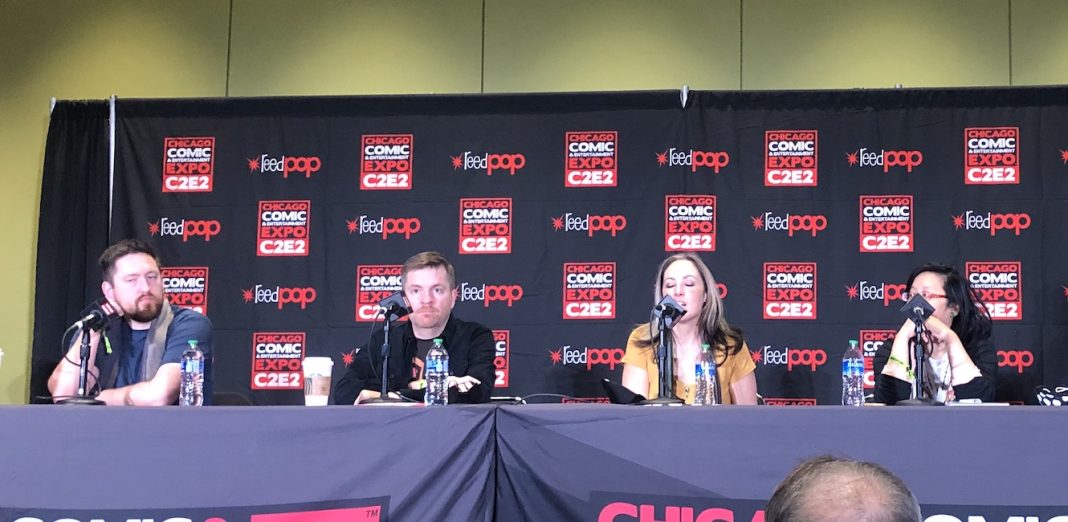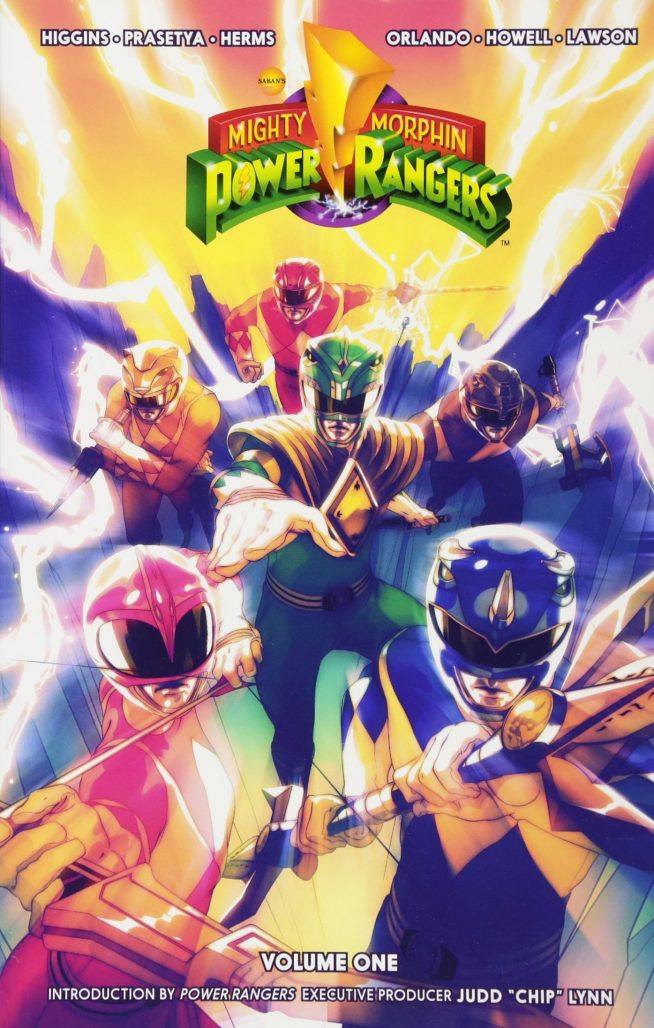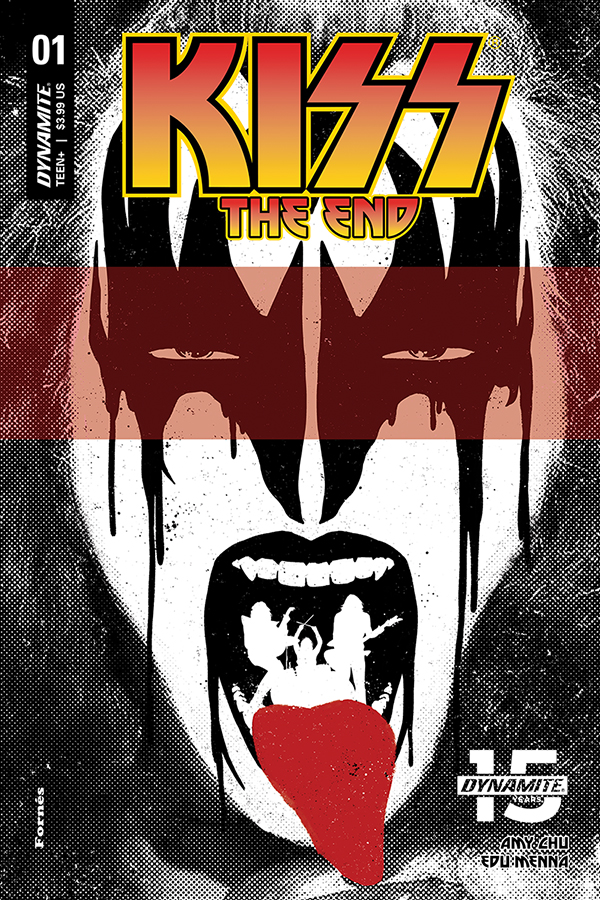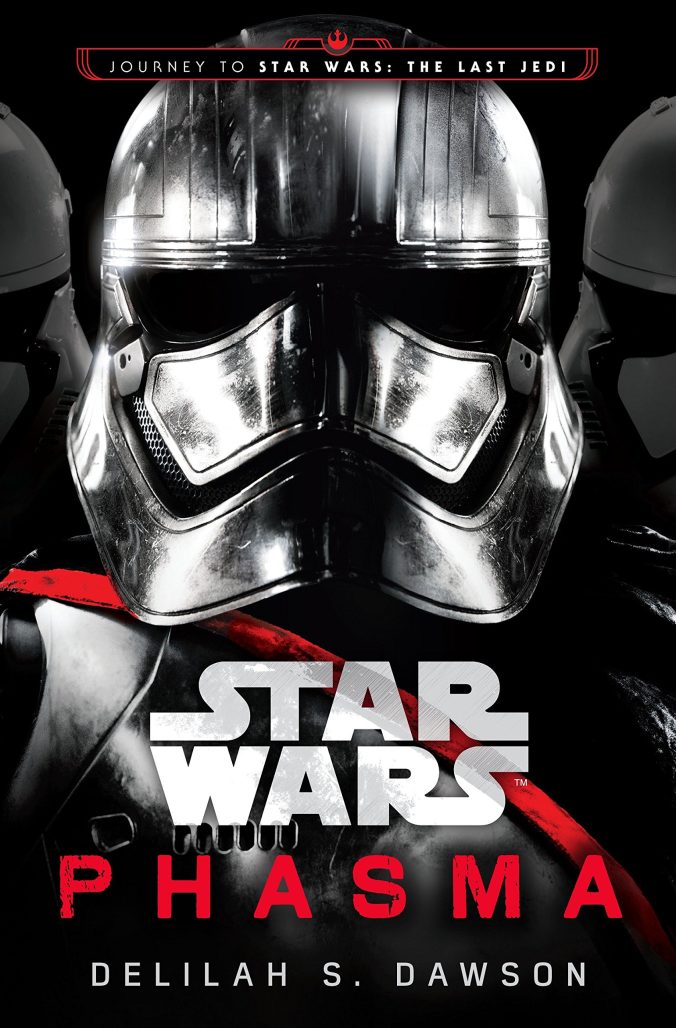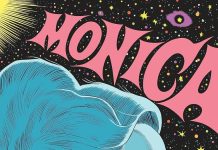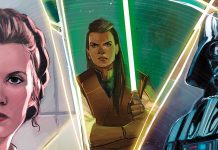By Andrew Warrick
On Sunday afternoon at C2E2, authors Charles Soule (Star Wars: Light of the Jedi), Kyle Higgins (Mighty Morphin Power Rangers), Delilah S. Dawson (Star Wars: The Skywalker Saga), and Amy Chu (Sky Island) convened for a panel about writing in another storyteller’s universe. The writers have explored fictional worlds across movies, TV, comics and, in Dawson’s case, an amusement park– she wrote Star Wars: Black Spire, a tie-in for Star Wars Galaxy’s Edge.
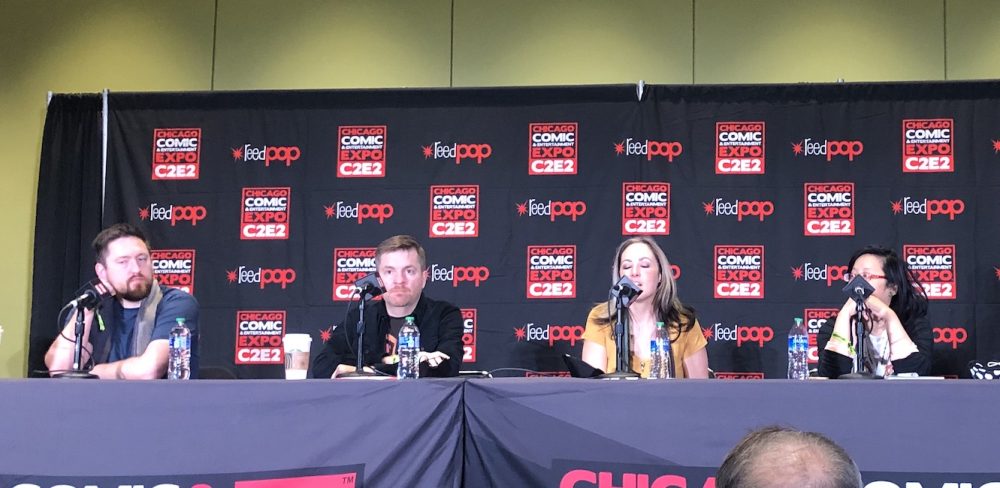
Amy Chu has written for “just about every publisher,” including Marvel, DC, Dark Horse, Disney, Pixar, and Netflix. “If I have to go blank page, that’s actually a little terrifying for me. I like to have some constraint.”
Soule is most known for his Star Wars work, most recently on The High Republic. When writing, he strives to “leave this world and go to the other world… whether it’s a galaxy far, far away or… you’re writing novels, the only way at least that I can do it… [is] completely form that other existence, that other universe in your mind, populate it with characters and then you need to let those characters do what they’re going to do…. Create a world and then inhabit it.” He used this approach for Star Wars: The High Republic, asking himself “what are the essential things that Star Wars is?”
Higgins made a splash with Power Rangers at BOOM! Studios, and has written for DC and Marvel, including the latter’s Ultraman series. Writing for established universes, he feels a “responsibility… to [be] stewards of characters…. It’s not yours. That means that… there are certain story decisions and certain directions that might be really, really interesting to you as a creator… but they may not be the responsible decisions for that world or brand or universe.” Higgins compared famous properties to a chessboard, saying “you can rearrange it in all different formations… [but] it’s ultimately… the illusion of change.”
Dawson has written Star Wars, Firefly, X-Files, Labyrinth, Adventure Time, and more. She called the process a “balancing act… [that] really depends on whose world you’re writing in and how tightly they hold things.” For her X-Files work, she was allowed to pick anything to write about and “go nuts.” With Spider-Man, however, she had to follow the “intricacies of the Spider-Man rules.” Star Wars was similarly rigid–– “there’s a whole crew of people in the story group who hold all of this knowledge… they know exactly where Kylo Ren is on July 9th… And if he’s not in the solar system, you can’t use it.” She noted that there was flexibility with certain topics covered, giving Star Wars: Black Spire as an example. Dawson took what was meant to be a “Zagat Guide” for the Disney theme park and explored trauma and PTSD.
Chu agreed with Dawson, saying the rules depend on which franchise one writes for, recalling her Wonder Woman story. “Wonder Woman, you don’t mess around with. There are a lot of rules… you know, you can’t kill her… We at the end of the day need to put the toys back into the chest, and let someone else play with it and hopefully leave things in a better state.” She went on to say, though, that her comic for the band KISS was an exception. Chu could do anything she wanted. She also said that once a writer establishes a relationship with an IP, and the stakeholders trust them, they can take more risks.
Higgins was allowed to do just that, killing off the Green Ranger. He recalled a WonderCon crowd reading the issue in front of him for the first time. “Everyone went crazy… crying and screaming.” He urged the crowd to “trust me.”
“It’s a balance,” Soule said, “between getting the fans to the point where they’re willing to take the ride with you and understand that you did this for a reason. And a lot of that is your track record with them in the past, your track record with these characters.”
“I’m always writing for the fans,” Chu said. “But I also feel like… the fans don’t always know what they want.”
Asked about the pros and cons of writing in an established universe, Soule noted, with one’s own projects, they are “completely in control of the world building and storytelling, which is really gratifying” but with others’ IPs, it is “really fun connecting with existing fans… So, you know, it’s just a trade off.”
“It is so much fun to get to contribute to something that you really love,” Dawson added. The lack of control is a drawback for her, detailing when she learned Captain Phasma, a character Dawson followed in Star Wars: Phasma, was killed in The Last Jedi: “It was very startling… it was really sad and also felt like she was kind of done dirty, and then she deserved better.” Dawson still has hope, though: “show me the body… I’ve seen plenty of people in Star Wars fall through burning fiery holes and live.” She wants to write a novel where Phasma survives, and becomes a warlord.
Chu enjoys “fixing other people’s messes… [and] leaving things in a better state.” In her Green Hornet and Poison Ivy projects, she updated previous characters, making them “more modern… [because] I need to bring new fans… otherwise that franchise dies.” In Ivy’s case, Chu drew from her past experience in biotech to make the character a “legit scientist,” while, like Dawson in Star Wars: Black Spire, examining a topic that interests her. “We generally don’t talk about women on the spectrum…. Poison Ivy is a little bit high functioning with Asperger’s… So I set up some things very differently, and the fact that they let me run with that, and let me go that route, made me very happy.”
Miss any of our previous C2E2 ’21 coverage? Find it all here!


